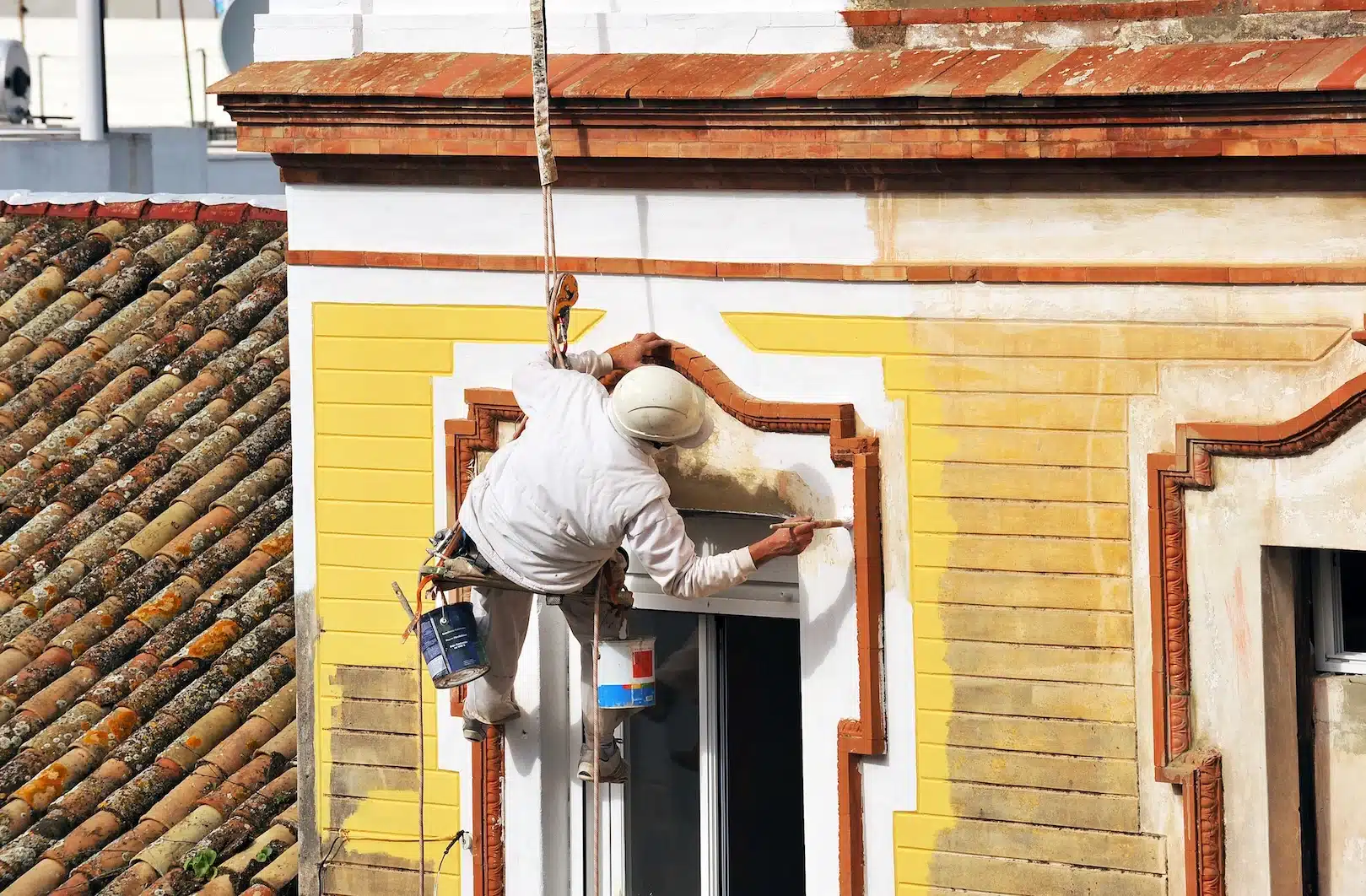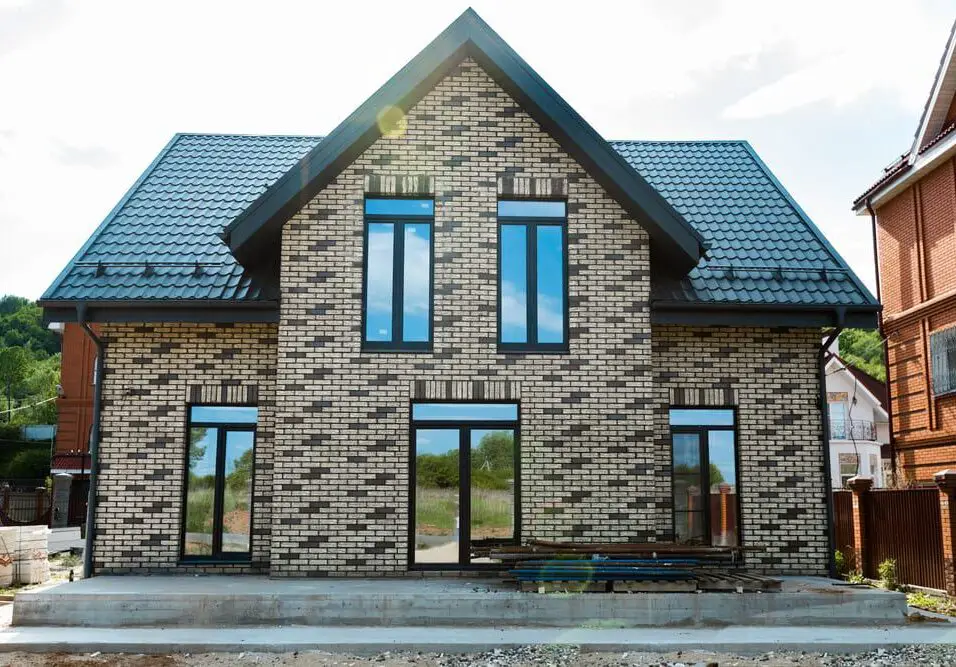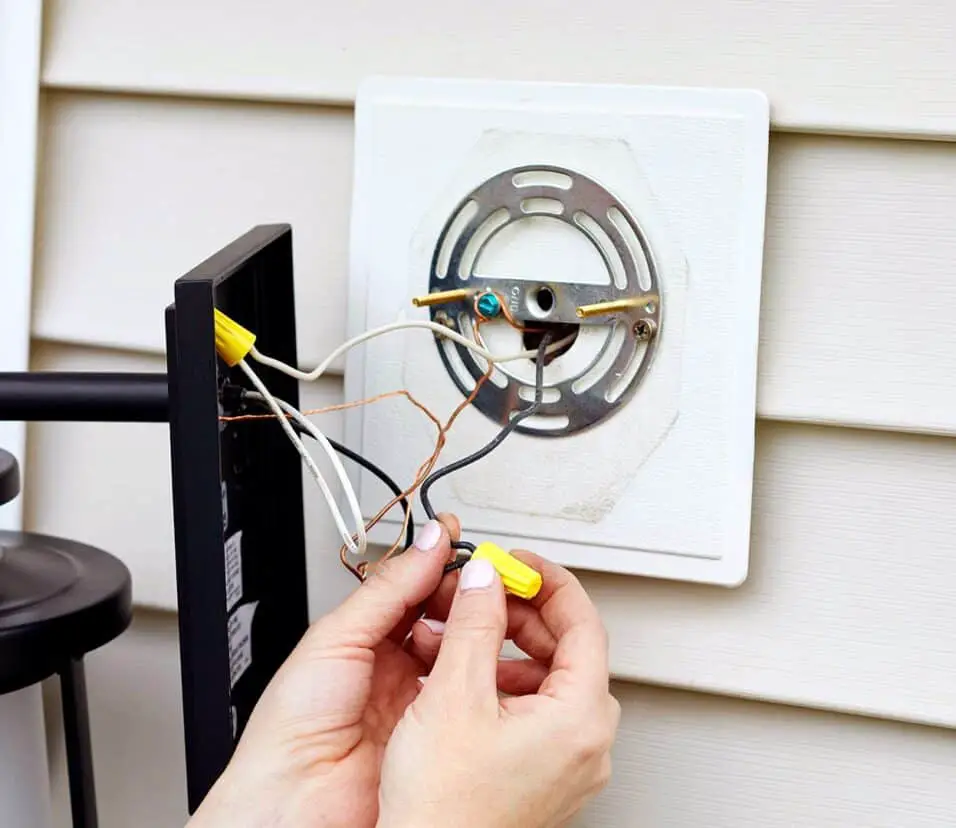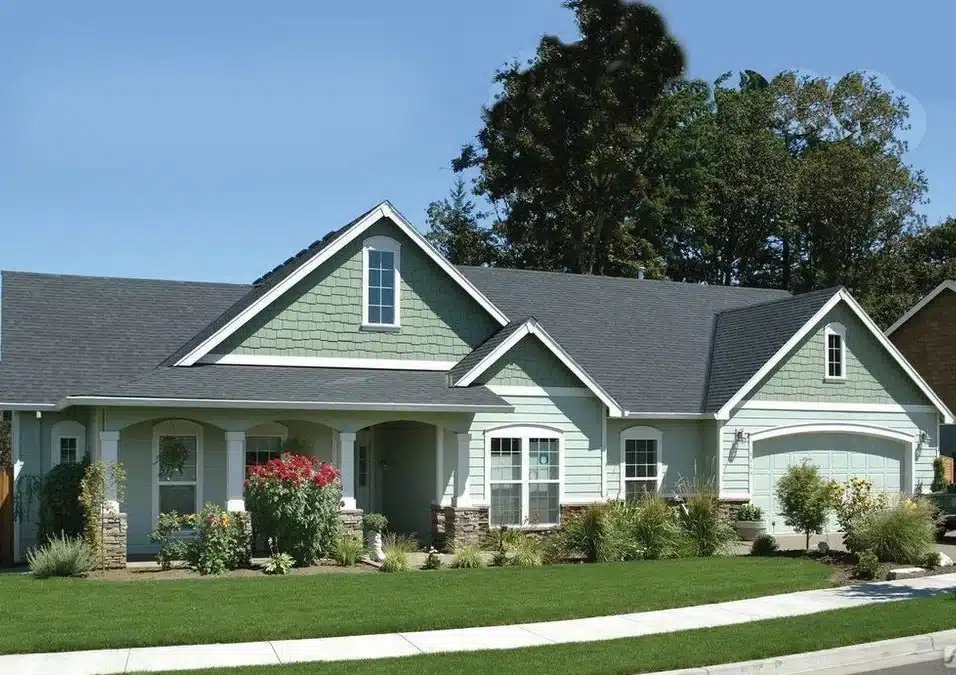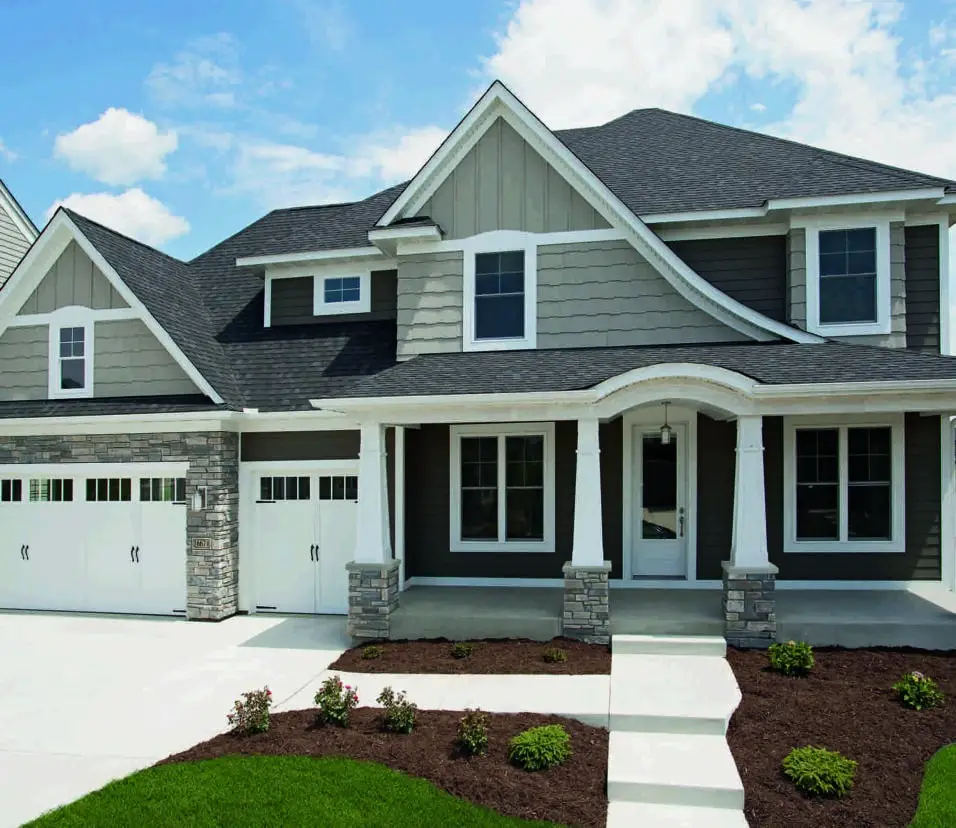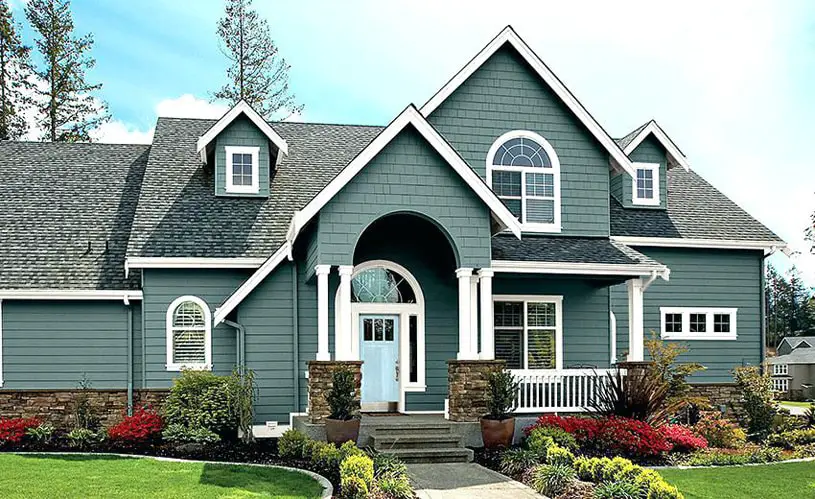How Much To Charge For Exterior Painting
Introduction
Cost of outside Painting: Homeowners and contractors often ask how much to charge for outside painting. It might be difficult to price outside painting because it depends on aspects including project size, paint and material type, and skill. This post will discuss the aspects that affect exterior painting costs and offer tips to help you set a reasonable pricing.
Size of the project: The size of the project is one of the primary factors that will impact the cost of exterior paint. Larger projects, such as painting an entire house or a commercial building, will naturally require more time, labor, and materials, resulting in a higher price. On the other hand, smaller projects like painting a single door or window trim will be less expensive. It is important to accurately assess the size of the project before providing a quote to ensure that you are charging a fair price.
Type of paint and materials: The type of paint and materials used for the exterior painting job will also affect the overall cost. High-quality paints and materials tend to be more expensive, but they offer better durability and a longer-lasting finish. Additionally, certain specialized paints, such as those designed for specific weather conditions or surfaces, may come at a higher price. It is essential to consider the specific requirements of the project and discuss the options with the client to determine the most suitable paint and materials.
Level of expertise required: The level of expertise required for the exterior painting job can also impact the pricing. It is important to assess the level of expertise required for the project and factor it into the pricing accordingly.
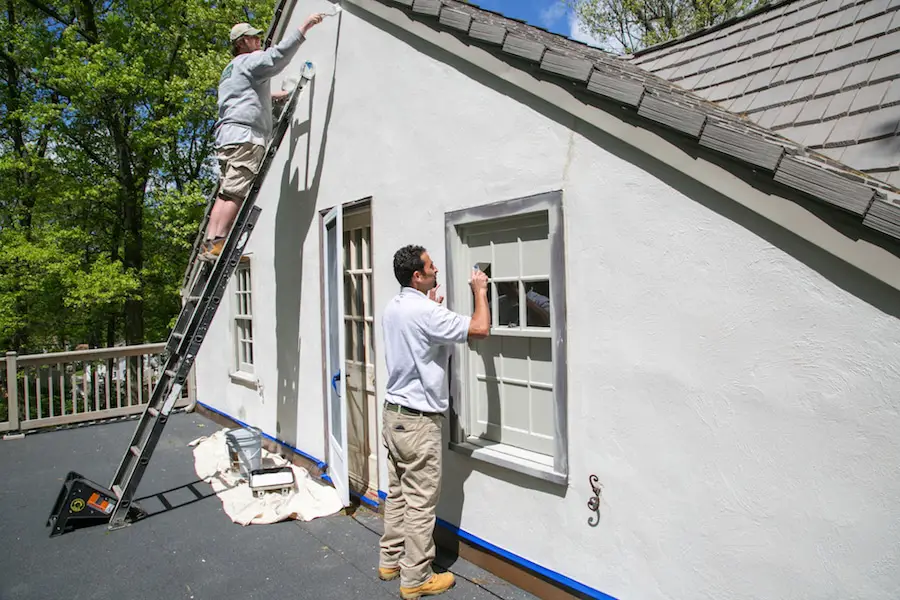
How do you calculate exterior paint cost?
You should budget for paint by finding the total surface area in the square foot that needs to be covered in paint. Then you can select the type of paint you want to use whether it is interior paint or exterior paint. The price of paint can range from ₹10 per sq. ft to ₹200 per sq. ft. Calculating the cost of exterior paint can be a crucial step in planning a painting project.
Firstly, you need to measure the area that needs to be painted. This involves calculating the total square footage of the exterior surfaces that will be painted. To do this, measure the height and width of each wall, and multiply these measurements together to get the square footage of each wall. Add up the square footage of all the walls to get the total square footage of the area to be painted.
Secondly, you need to determine the type and quality of paint you will be using.
There are various types of exterior paint available, ranging from basic latex paints to high-end acrylic or oil-based paints. The quality of the paint can also vary, with higher-quality paints generally offering better coverage and durability.
Next, you should calculate the amount of paint needed based on the square footage of the area to be painted. Most paint cans provide information on the coverage area of the paint, typically measured in square feet per gallon. Divide the total square footage by the coverage area of the paint to determine the number of gallons needed. It is always a good idea to buy slightly more paint than you think you will need to account for any touch-ups or additional coats.
Finally, you should consider any additional materials that may be required for the painting project. This could include items such as primer, brushes, rollers, drop cloths, and tape. These additional materials should be factored into the overall cost estimate. It is also important to consider any labor costs if you are hiring a professional painter to complete the job.
How much paint required for 1,000 sq ft?
How much paint is needed for 1000 sq ft? Whether painting the interior or exterior of a house, the amount of paint depends on the area. Typically, 30 to 35 litres of paint are needed to paint a two-bedroom unit with 1,000 square feet.
The type of surface being painted plays a significant role in determining the amount of paint needed. Different surfaces absorb paint differently, and some may require more coats than others. For example, a rough or porous surface may require more paint to achieve full coverage compared to a smooth surface. It is important to consider the condition and texture of the surface before estimating the amount of paint required.
The number of coats required is another factor that affects the amount of paint needed.
In most cases, two coats of paint are recommended for optimal coverage and durability. However, if the surface being painted has a dark or bold color, additional coats may be necessary to achieve the desired result. It is important to read the manufacturer’s instructions on the paint can to determine the recommended number of coats for the specific paint being used.
The type of paint being used also plays a role in determining the amount needed. Different types of paint have different coverage rates, which can affect the amount required. For example, high-quality paints often have better coverage and may require less paint compared to lower-quality paints.
By considering these factors, you can estimate the amount of paint required for a 1,000 square foot area more accurately. It is recommended to use an online paint calculator or consult with a paint professional to get a precise estimate based on the specific details of your project. Having the right amount of paint ensures that you can complete your project smoothly without any interruptions or delays.
How do you calculate labor cost for painting?
Home Painting labour cost
The cost of labour is approximately 3/2 (1.5 times) the expense incurred for materials. For example, if the material cost is Rs 5,000, the labour cost would be (3/2) *5,000) – Rs 7,500. Nevertheless, the cost may vary across cities.
Calculating labor costs for painting involves several factors that need to be taken into consideration. These factors include the size of the project, the complexity of the work, the experience and skill level of the painters, and the location of the project. By considering these factors, you can determine an accurate estimate of the labor cost for a painting job.
Firstly, the size of the project plays a significant role in determining the labor cost. Larger projects will require more time and effort from the painters, which will result in higher labor costs. It is important to accurately measure the area to be painted to ensure an accurate estimate of the labor cost.
Secondly, the complexity of the work will also impact the labor cost.
Some painting projects may require additional preparation work, such as sanding, priming, or repairing damaged surfaces. These additional tasks will require more time and effort from the painters, which will increase the labor cost. Similarly, projects that involve intricate designs or patterns will require more skill and precision, resulting in higher labor costs.
Thirdly, the experience and skill level of the painters will also affect the labor cost. Experienced painters who have a proven track record of delivering high-quality work may charge higher rates compared to less experienced painters. This is because their expertise and skill can result in a more efficient and superior painting job. It is important to consider the painters’ qualifications and experience when calculating the labor cost.
Lastly, the location of the project can also impact the labor cost. Labor rates can vary depending on the region or city where the project is located. Areas with a higher cost of living or a higher demand for painters may have higher labor rates.
How much area covered by 1 litre paint?
how much area will be covered by 1 litre of paint. As a general rule of thumb, let’s consider that 1 litre of paint will cover around 130 sq ft. Now, different types of paint will have different coverage of the surface per square foot. However, there are some general guidelines that can help provide an estimate.
The first factor to consider is the type of paint being used. Different types of paint have different levels of coverage. For example, oil-based paints tend to have a higher coverage rate compared to water-based paints. This is because oil-based paints have a higher concentration of pigments, which allows them to cover a larger area with less paint. On the other hand, water-based paints may require multiple coats to achieve the same level of coverage.
The second factor to consider is the surface being painted. Smooth surfaces, such as walls or ceilings, generally require less paint compared to rough or textured surfaces. This is because rough surfaces tend to absorb more paint, resulting in a lower coverage rate.
The third factor to consider is the method of application. The coverage rate can vary depending on whether the paint is applied with a brush, roller, or sprayer. Generally, using a roller or sprayer can result in a higher coverage rate compared to using a brush. This is because rollers and sprayers can apply a more even coat of paint, allowing for better coverage.
How much does 1 litre of paint cover?
how much area will be covered by 1 litre of paint. As a general rule of thumb, let’s consider that 1 litre of paint will cover around 130 sq ft.
When it comes to painting a room or a surface, one of the most common questions that arises is how much area can be covered by a litre of paint. The coverage of paint can vary depending on several factors such as the type of paint, the texture of the surface, and the method of application. However, on average, a litre of paint can cover approximately 10 to 12 square meters of surface area.
The coverage of paint is determined by its opacity and thickness. Paints with higher opacity and thickness tend to provide better coverage and require fewer coats. This is especially true for paints with a higher concentration of pigments. On the other hand, paints with lower opacity may require multiple coats to achieve the desired coverage.
The texture of the surface also plays a significant role in determining the coverage of paint. Rough or porous surfaces tend to absorb more paint, resulting in lower coverage. In contrast, smooth and non-absorbent surfaces require less paint for coverage. It is important to consider the texture of the surface and choose the appropriate type of paint accordingly.
The method of application can also affect the coverage of paint. Using a brush or roller tends to provide better coverage compared to spraying. This is because brushes and rollers allow for better control and ensure that the paint is evenly distributed. Spraying, on the other hand, may result in overspray and uneven coverage, requiring more paint to achieve the desired result.
How much area will be covered by 1 litre of paint.
It is important to note that the coverage mentioned above is an average estimate and may vary depending on the specific circumstances. It is always recommended to consult the manufacturer’s instructions and guidelines for the specific paint product being used. Additionally, factors such as the color of the paint and the condition of the surface can also impact the coverage. Therefore, it is advisable to conduct a small test patch before starting a painting project to determine the actual coverage of the paint.
When determining the price for exterior painting, several factors need to be taken into consideration. Firstly, the size of the project plays a significant role in determining the cost. Larger surfaces require more time, labor, and materials, which can increase the overall price. Additionally, the complexity of the project should be considered. If there are intricate details or hard-to-reach areas, it may require more skill and effort, thus impacting the pricing.
Another important factor is the condition of the surface to be painted. If there are existing damages or repairs needed, it can add to the cost as these issues must be addressed before painting can begin. The type of paint and finish desired by the client also affects the pricing. High-quality paints and specialized finishes may come at a higher cost.
Furthermore, the location of the project can influence the price. Different regions may have varying labor and material costs, which should be taken into account. Lastly, the reputation and experience of the painting contractor can also impact the pricing. Established and reputable contractors may charge higher rates due to their expertise and track record of delivering quality work.
What factors should be considered when determining the price for exterior painting?
When determining the price for exterior painting, several factors need to be taken into consideration. Firstly, the size of the project plays a significant role in pricing. Larger surfaces require more time, labor, and materials, which can increase the overall cost. Additionally, the complexity of the project should be considered.
The condition of the surface to be painted is another important factor to consider. If there are cracks, peeling paint, or other damages, it may require additional preparation work, such as sanding or priming, which can affect the pricing. Furthermore, the type of paint and finish chosen by the client can impact the cost. High-quality paints and specialized finishes tend to be more expensive, but they can also provide better durability and aesthetic appeal.
How can the size and complexity of a painting project affect the pricing?
When determining the price for an exterior painting project, the size and complexity of the project play a significant role. The size of the project refers to the total area that needs to be painted, including walls, trim, and other surfaces. Larger projects require more time, labor, and materials, which can increase the overall cost. Additionally, larger projects may require the use of specialized equipment or additional manpower, further impacting the pricing.
The complexity of a painting project refers to the level of difficulty involved in the job. Factors such as the height of the building, the presence of intricate architectural details, or the need for extensive surface preparation can all contribute to the complexity of the project. More complex projects often require additional time and expertise, which can result in higher pricing.
It is important to consider both the size and complexity of a painting project when determining the pricing. A larger and more complex project will generally require more resources and effort, which will be reflected in the final cost. However, it is also essential to strike a balance between pricing and quality. While larger and more complex projects may command higher prices, it is crucial to ensure that the pricing is fair and competitive within the market.
What additional costs, such as materials or equipment, should be factored into the pricing?
When determining the price for exterior painting, it is crucial to consider the additional costs associated with materials and equipment. These costs can significantly impact the overall pricing of the project.
Firstly, the cost of materials should be taken into account. This includes the paint itself, as well as any primers, sealers, or other products necessary for the job. The quality of the materials chosen can also affect the price, as higher-quality paints and products tend to be more expensive. Additionally, the quantity of materials needed will depend on the size of the project, so it is important to accurately estimate the amount required.
Secondly, the cost of equipment should be factored in. This includes brushes, rollers, sprayers, ladders, and any other tools necessary for the painting process. The type and quality of equipment can vary, and investing in high-quality tools may result in a higher upfront cost but can lead to better results and increased efficiency.
When determining the price for exterior painting, it is essential to consider the additional costs of materials and equipment. By accurately estimating these costs and factoring them into the pricing, both the painter and the client can ensure a fair and transparent agreement.” “
Are there any specific market trends or competitive factors that should be taken into account when setting the price for exterior painting?
When determining the price for exterior painting, it is crucial to consider specific market trends and competitive factors. These factors can greatly influence the pricing strategy and ensure that the price is competitive and attractive to potential customers.
One important market trend to consider is the demand for exterior painting services. If there is a high demand for such services in the market, it may be possible to set a slightly higher price due to the increased competition. On the other hand, if the market is saturated with painting contractors, it may be necessary to set a more competitive price to attract customers.
Competitive factors also play a significant role in pricing. It is essential to research and analyze the prices offered by competitors in the area. By understanding the pricing strategies of other painting contractors, it becomes easier to position oneself in the market. If competitors are offering lower prices, it may be necessary to adjust the pricing accordingly to remain competitive. However, if competitors are charging higher prices, it may be possible to set a slightly higher price as well, especially if there are unique selling points or added value in the services provided.
Market trends and competitive factors should be carefully considered when setting the price for exterior painting. By analyzing the demand for services and researching competitors’ pricing strategies, it becomes possible to determine a competitive and attractive price that aligns with the market conditions.” “
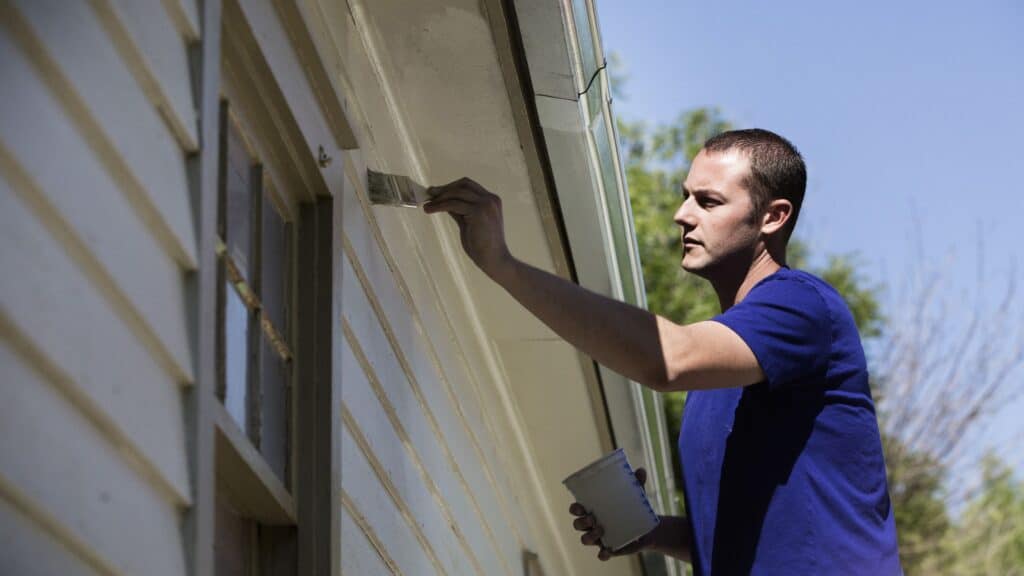
Conclusion
Determining how much to charge for exterior painting requires careful consideration of various factors. These factors include the size of the project, the complexity of the job, the cost of materials, and the level of expertise required. By taking these factors into account, painters can ensure that they are charging a fair and competitive price for their services.
One important factor to consider when determining pricing for exterior painting is the size of the project. Larger projects will typically require more time and resources, which should be reflected in the price. Additionally, the complexity of the job should also be taken into account. Projects that involve intricate designs or hard-to-reach areas may require additional time and effort, which can impact the overall cost.
Another factor to consider is the cost of materials. Painters should factor in the paint cost , brushes, rollers, and other supplies when determining their pricing. It is important to ensure that the price charged covers these expenses and allows for a reasonable profit margin. Additionally, the level of expertise required for the job should also be considered. Painters with specialized skills or certifications may be able to charge a higher rate for their services.
Determining how much to charge for exterior painting is a complex process that requires careful consideration of various factors. By taking into account the size of the project, the complexity of the job, the cost of materials, and the level of expertise required, painters can ensure that they are charging a fair and competitive price. It is important for painters to carefully assess each project and consider all relevant factors in order to provide accurate and reasonable pricing for their services.



